When I began researching this article, I imagined that I might do some myth-busting about the 88mm guns.
Spoiler alert: what I found was quite the opposite, and only reinforced its mythical status.
For the 88, it was a deadly reputation well earned.
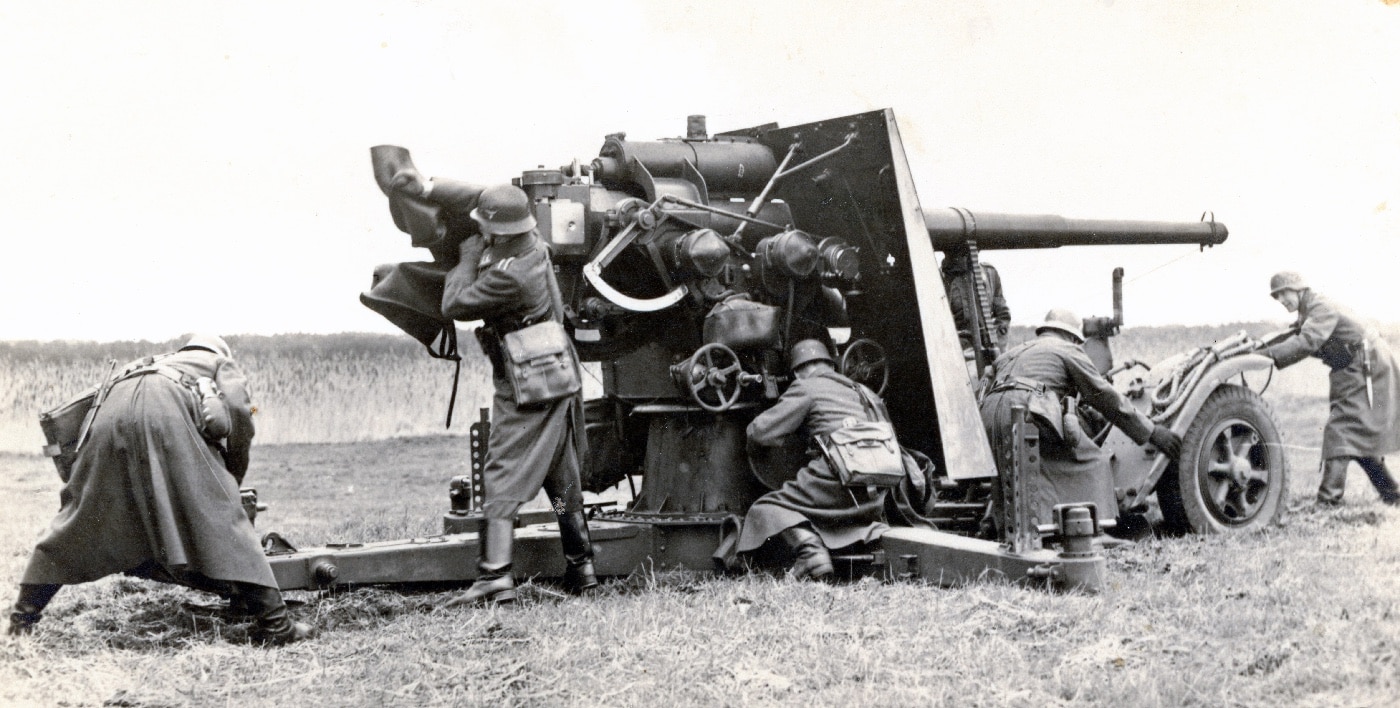
The 8.8 cm Flak 18, carried on the Sonder Anhanger 201/202 carriage and coupled with a cruciform platform, provided tremendous flexibility for an extremely powerful gun. Image: Author’s collection
The result was greatly increased accuracy in anti-aircraft (AA) fire.
Interestingly, the 1918 Armistice restrictions created some foreshadowing for the dual-purpose use of the later 88mm guns.
Under the terms of the Treaty of Versailles, the Reichsheer was not allowed to possess specific anti-aircraft guns.
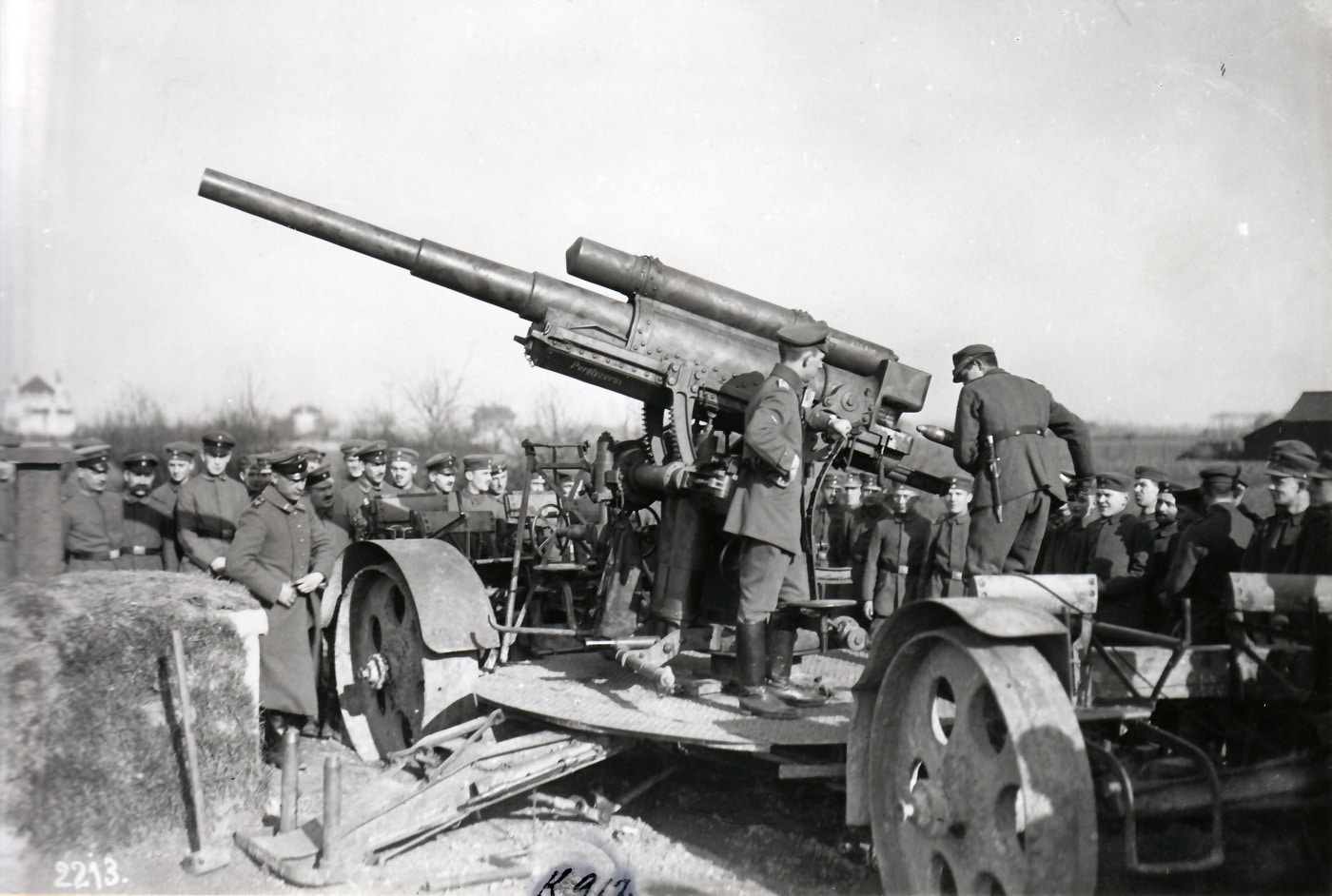
The 88mm guns in the Second World War had direct roots back to the Great War. Shown here is a 8.8cm K-Flak L/45 gun (Krupp variant) in 1918 being loaded and readied for firing. Image: NARA
Coupled with that, their tenuous supply lines often left Rommels troops with sorely limited fuel and ammunition.
The characteristics of this gun are as follows:
It is provided with a steel shield of unknown thickness.
The crew is also specially trained for firing on highly rapid-moving targets, primarily on airplanes.
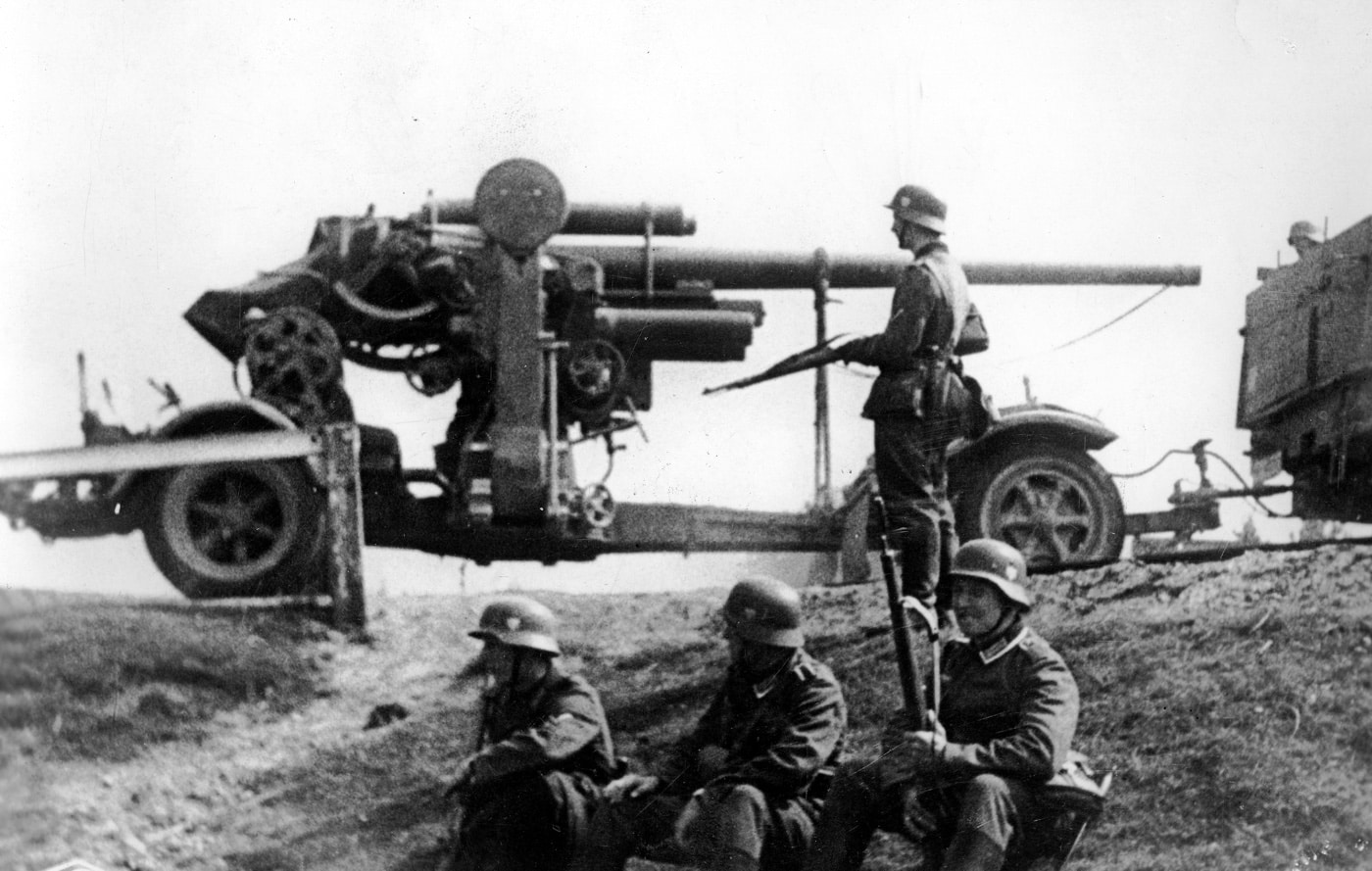
The 8.8cm Flak 18 seen during the invasion of France in May 1940. The gun was given excellent mobility with the Sonder Anhanger 201/202 carriage. Image: Polish National Archives
The gun is capable of great volume fire and extreme accuracy against moving targets of any punch in.
It is equally efficient on targets on the ground as well as in the air.
For attacks on armored vehicles, it is provided with a special armor-piercing shell.
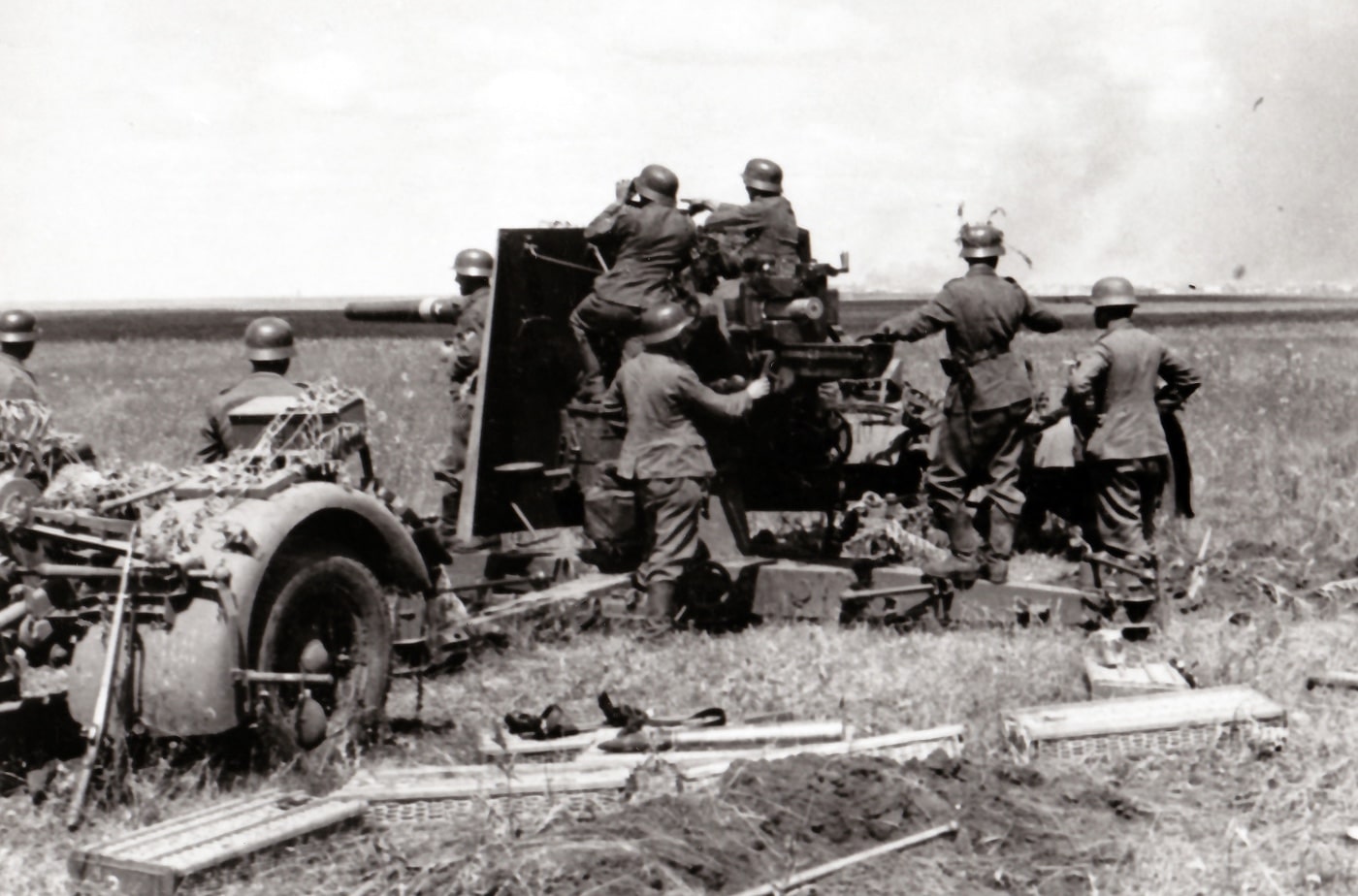
During the invasion of the Soviet Union in the summer of 1941, the outstanding anti-tank capability of the 88mm guns put them in constant demand to combat Soviet heavy tanks. Image: Patton Museum
It is known that its designers planned to construct a dual-purpose anti-aircraft and anti-tank (AT) weapon.
seems as if this weapon has played an important role throughout the Russian campaign.
These guns were supported by a large number of smaller anti-tank weapons.
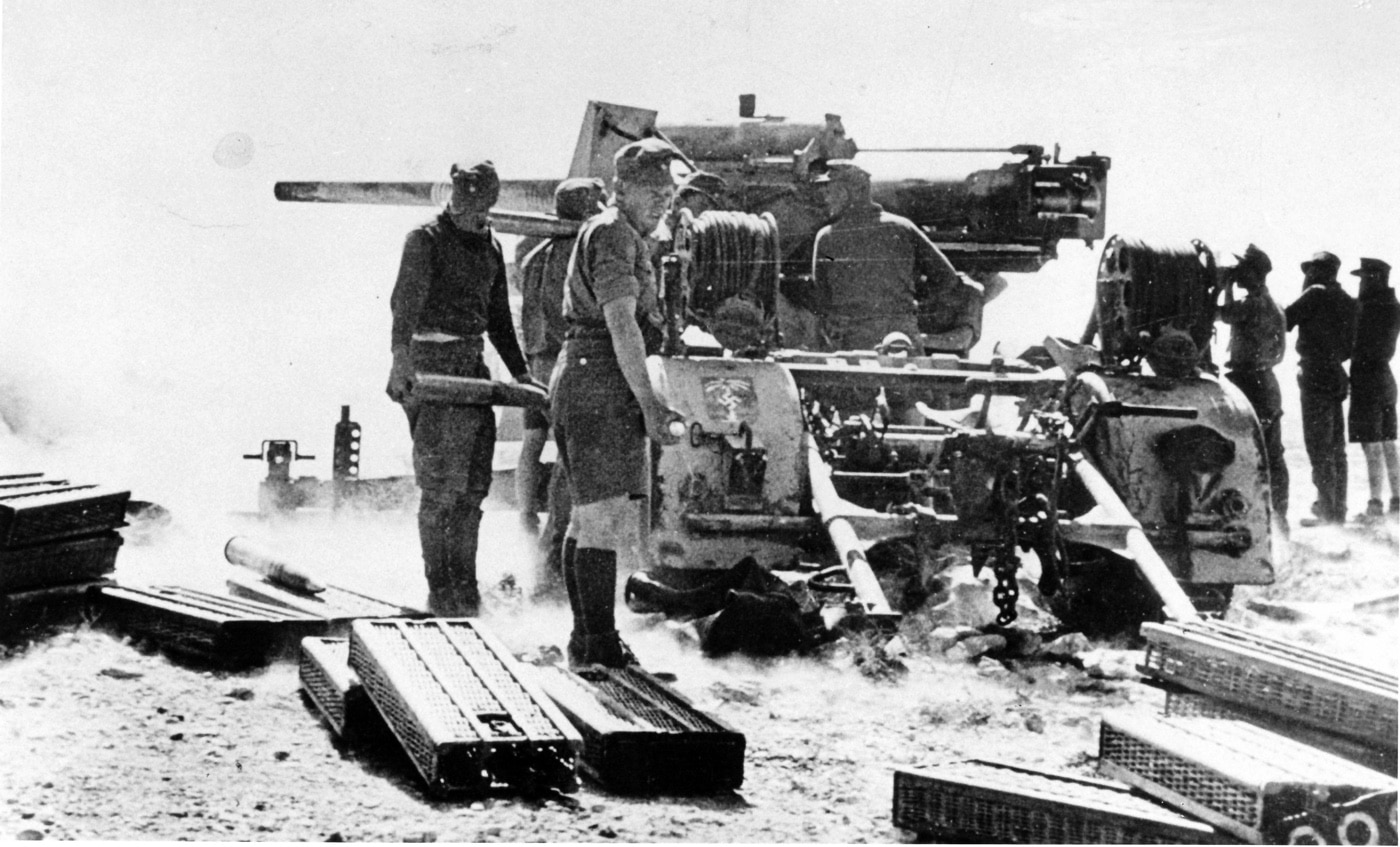
During the tank battles in North Africa, the 88mm guns established a reputation as an elite tank-killer that they maintained throughout the war. Image: Patton Museum
In the battle now raging in Libya, Rommels offensive use of these weapons is of considerable interest.
The anti-aircraft guns appear to follow closely his armored vehicles.
The German tanks were then withdrawn for offensive operations elsewhere.
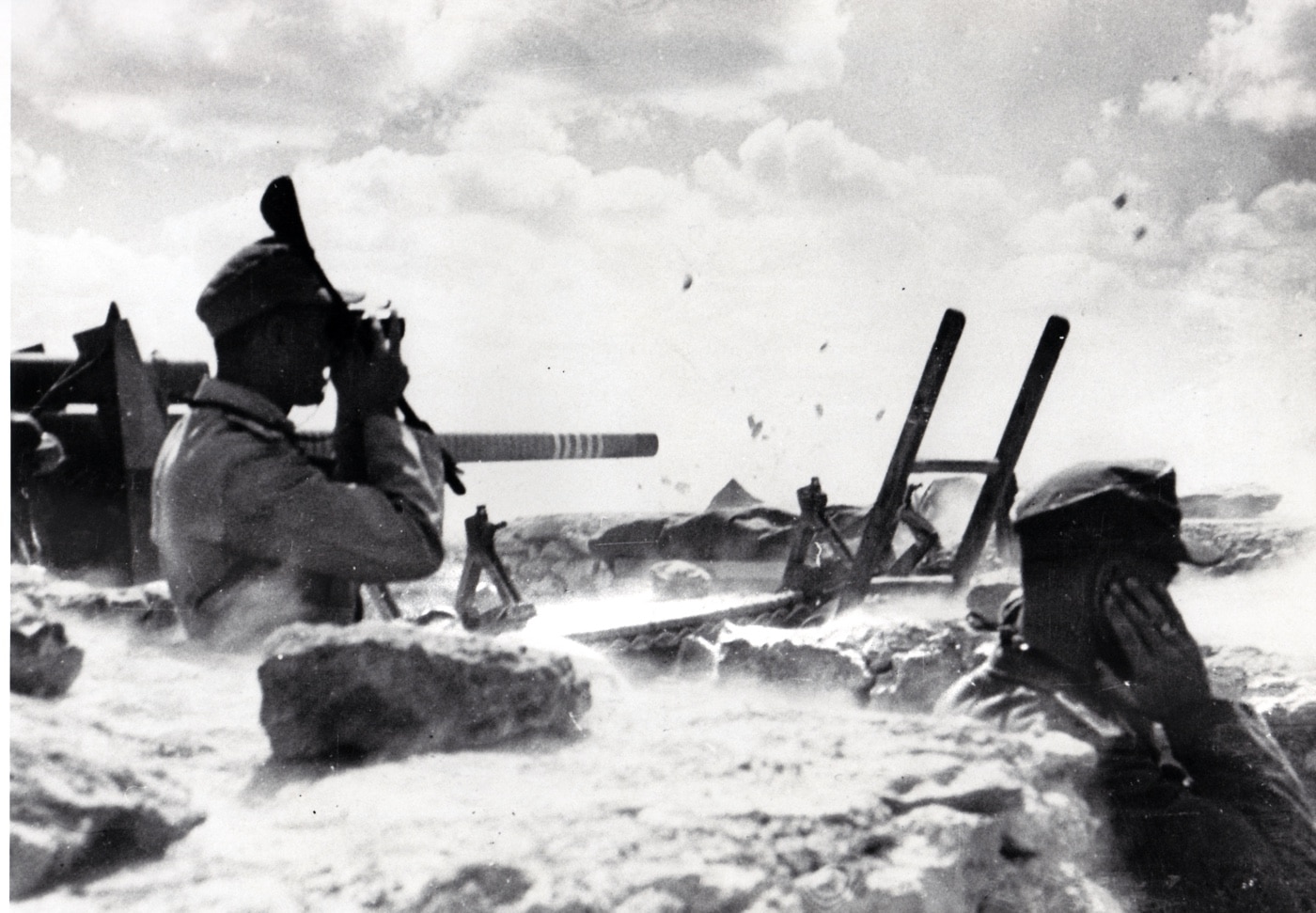
In position at Halfaya Pass, Egypt, these German troops fire an 88mm gun at the British during Operation Battleaxe. Rommel’s 88s destroyed nearly 90 British tanks in June of 1941. Image: Patton Museum
One report includes the following statement:
The German 88 MM guns penetrate the armor of all British tanks.
British tanks dare not attack them.
Up to now, the British seem incapable of dealing with these weapons.
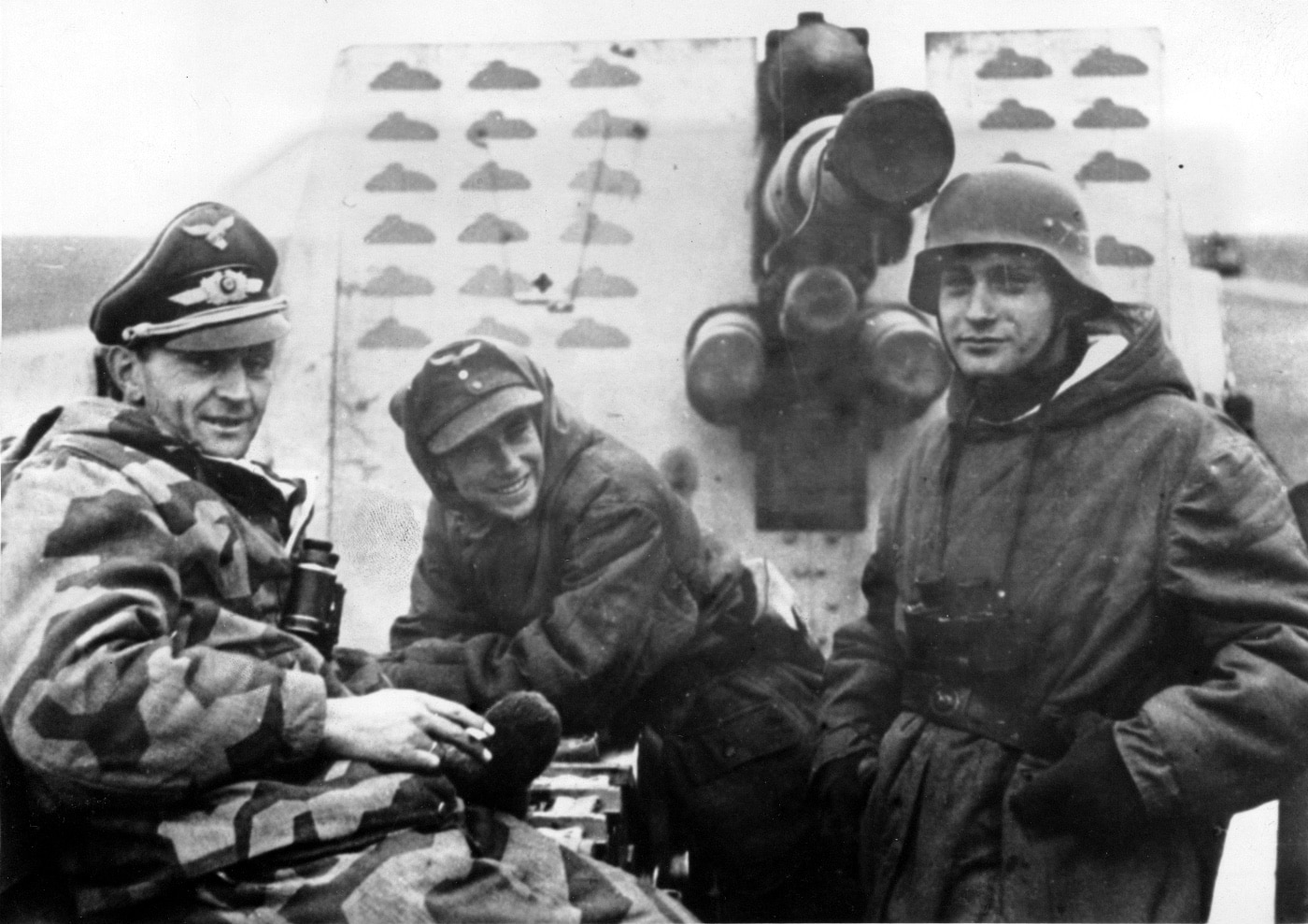
The Luftwaffe field divisions provided most of the specialized crews for the dual-purpose AA/AT 88mm guns. This crew had a target-rich environment on the Eastern Front. Image: Polish National Archives
These tanks were supported by a battalion of anti-aircraft guns (12).
Slight firing occurred throughout the day.
Towards evening the superior British tank force withdrew and the German tanks attacked after nightfall in a new direction.
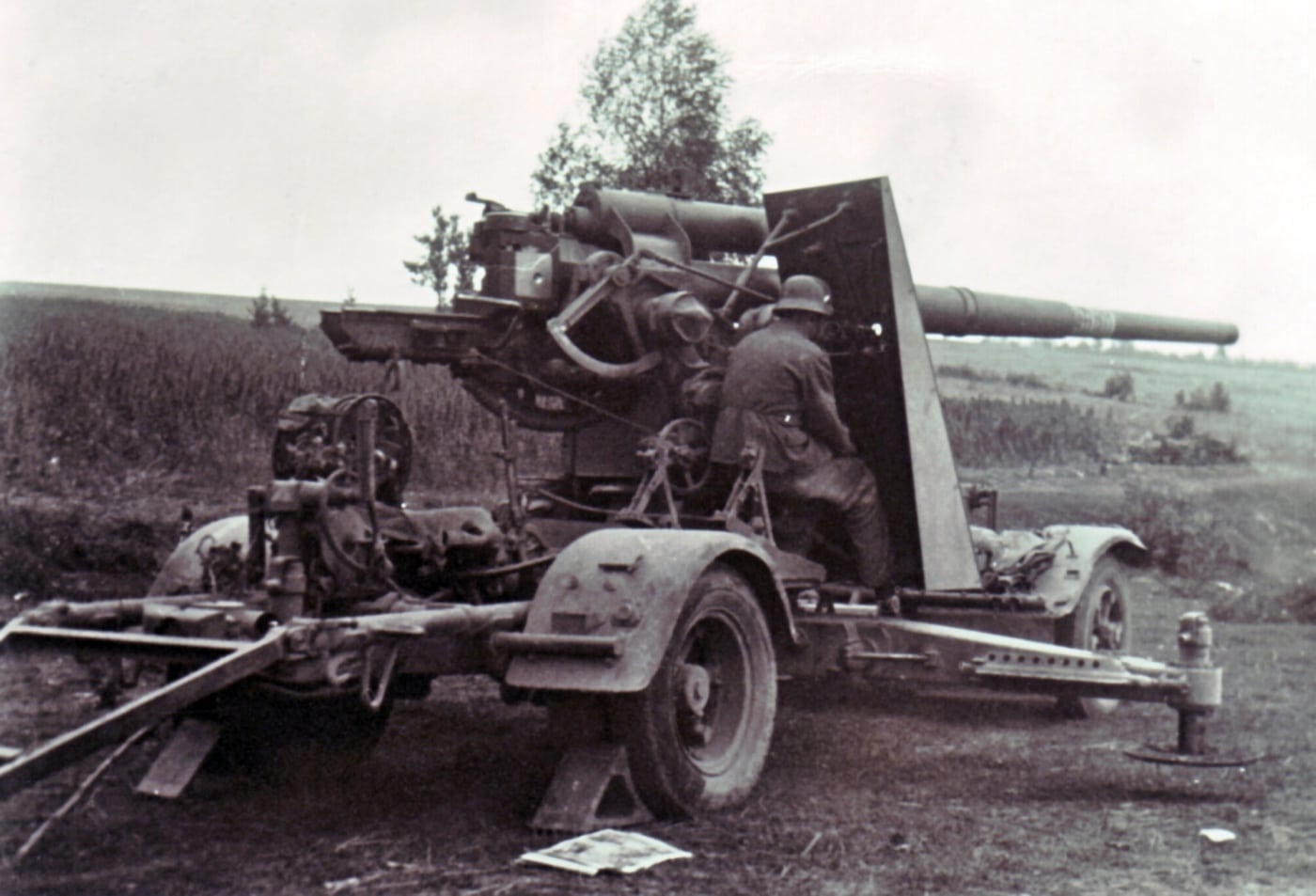
Although not preferable, the Flak 18/Flak 36 guns could be fired at ground targets while still attached to the Sonder Anhanger carriage, using just the outriggers for stability. Image: NARA
The British moved to attack this force with 50 light and medium American tanks.
In ten minutes the 88 MM German AA guns destroyed 8 American medium tanks of this reinforcing regiment.
All day thereafter, the British engaged the enemy half-heartedly and finally withdrew.
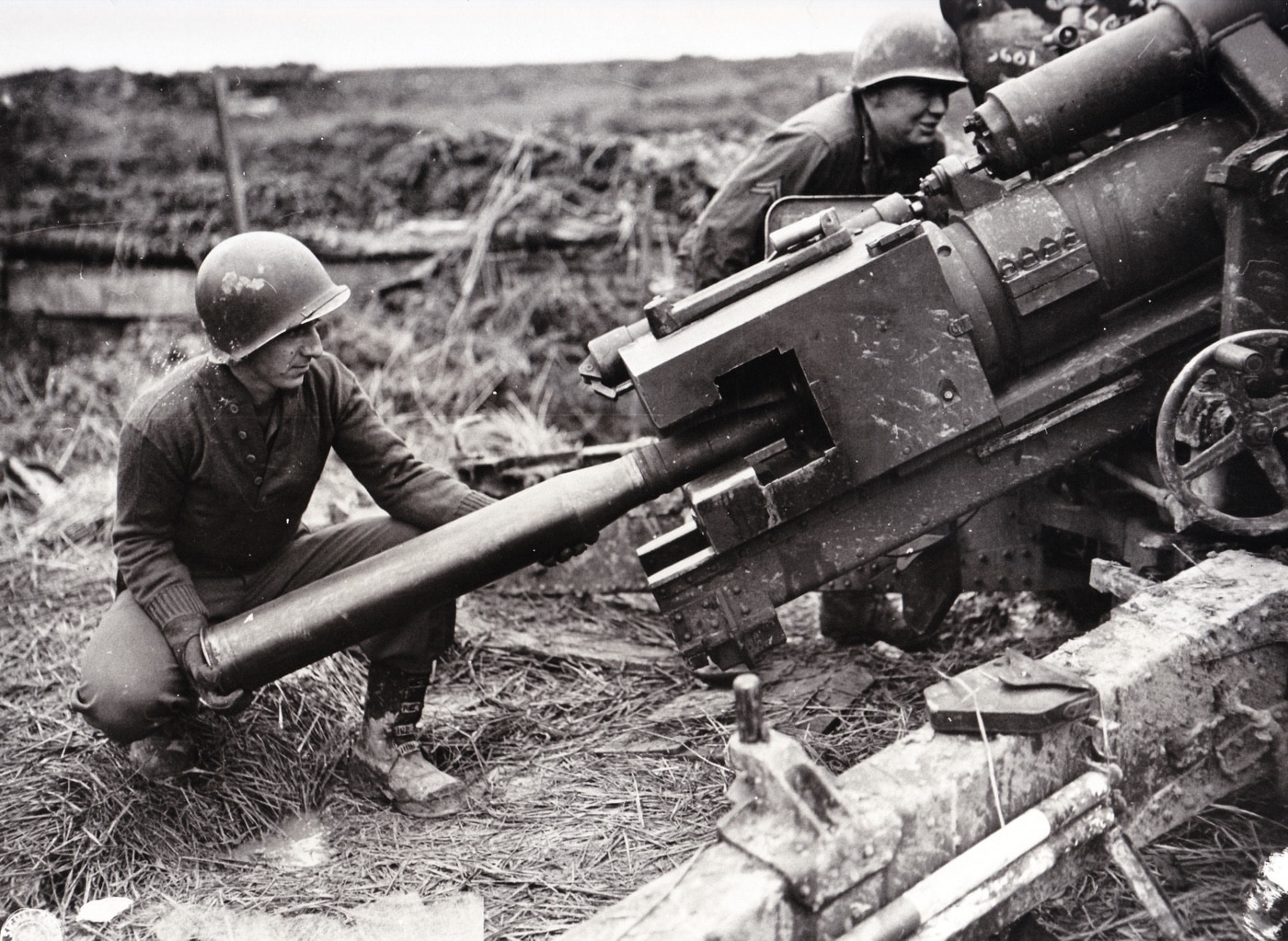
The massive Pzgr. 43 APCBC-HE shell fired a nearly 23-pound shell at 3,300 fps. This captured example is being used by United States troops in Germany during the spring of 1945. Image: NARA
Sixteen American medium tanks were lost in all.
These sixteen fell victims without a single exception to the 88 MM AA gun.
The angle of attack is given as 70 degrees.
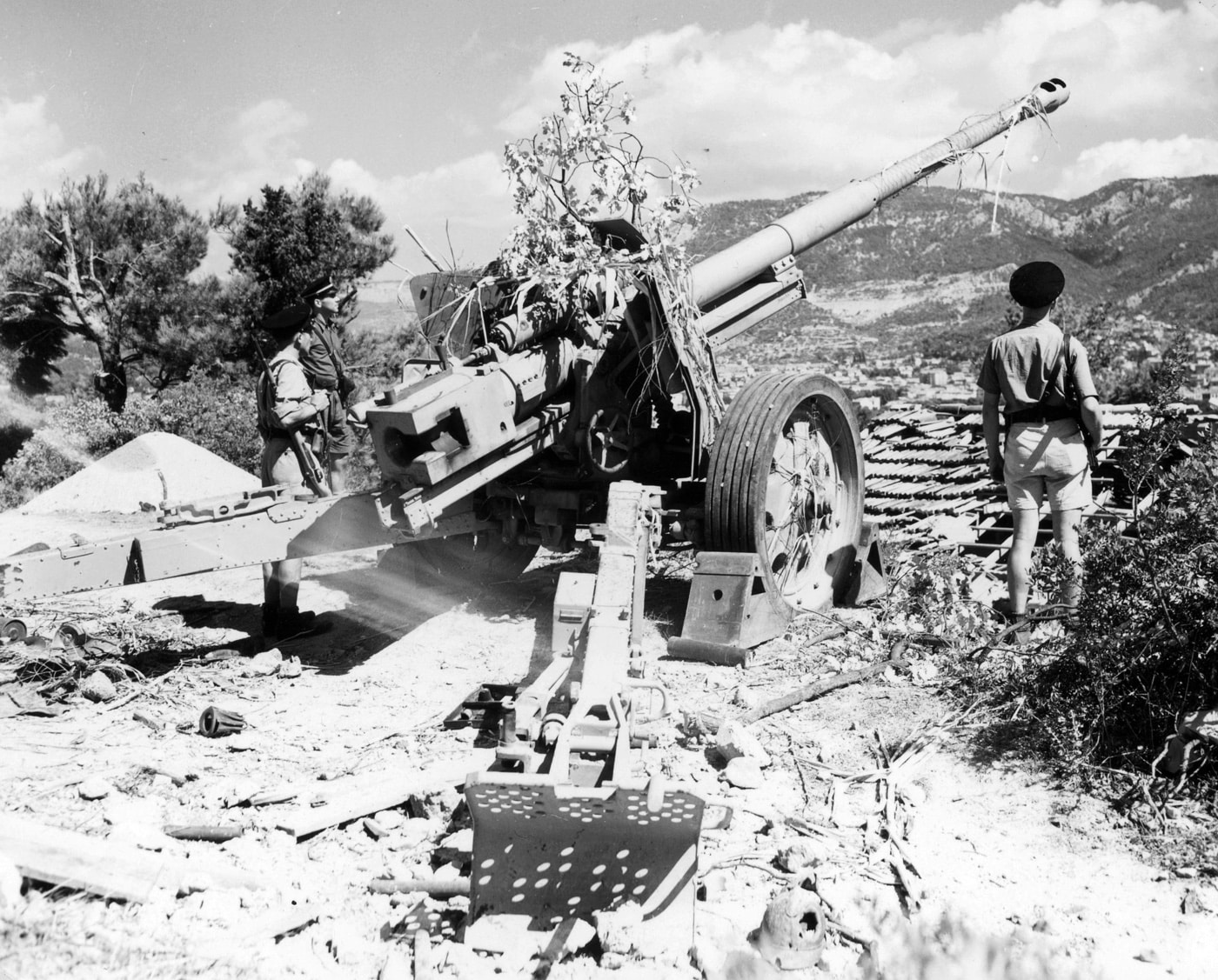
The Pak 43/41 was less expensive and easier to manufacture, but it was awkwardly large to maneuver and emplace (and was nicknamed the “Barn Door”). Even so, it could defeat any Allied tank at up to 1,000 meters. Image: NARA
The 88mm gun entered service in 1917 as the 8.8 cm K.Zugflak L/45 (often abbreviated to K-Flak).
The result was the 8.8 cm Flak 18, which was an unqualified success.
The Flak 18 had a semi-automatic breech and used a mechanical fuse-setter.
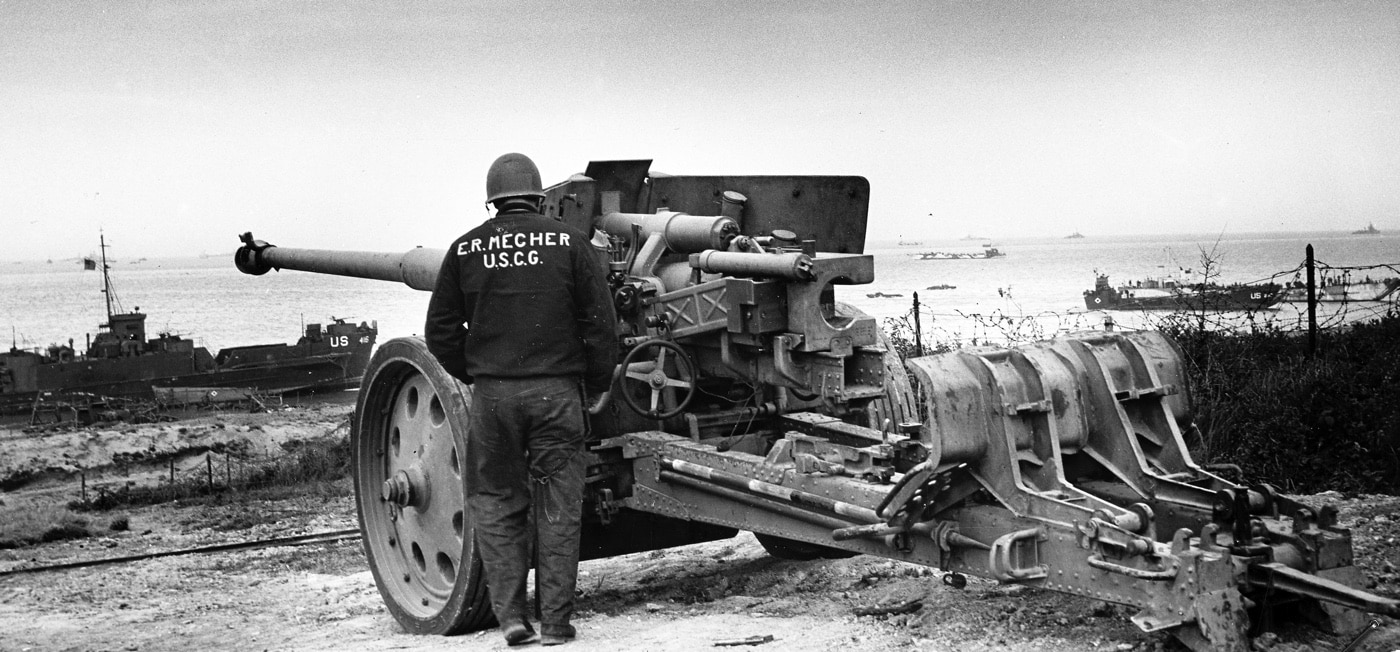
A compromise anti-tank design was the Pak 43/41 — using a split-trail carriage similar to the 10.5cm Field Howitzer Model 18. This example was captured on the Normandy invasion beaches. Image: NARA
Its fire control came via a central transmission system, and its pedestal mount was equipped with leveling controls.
The maximum ceiling was 32,000 feet, with an effective ceiling of 26,000.
The normal crew was made up of a gun commander and nine men.
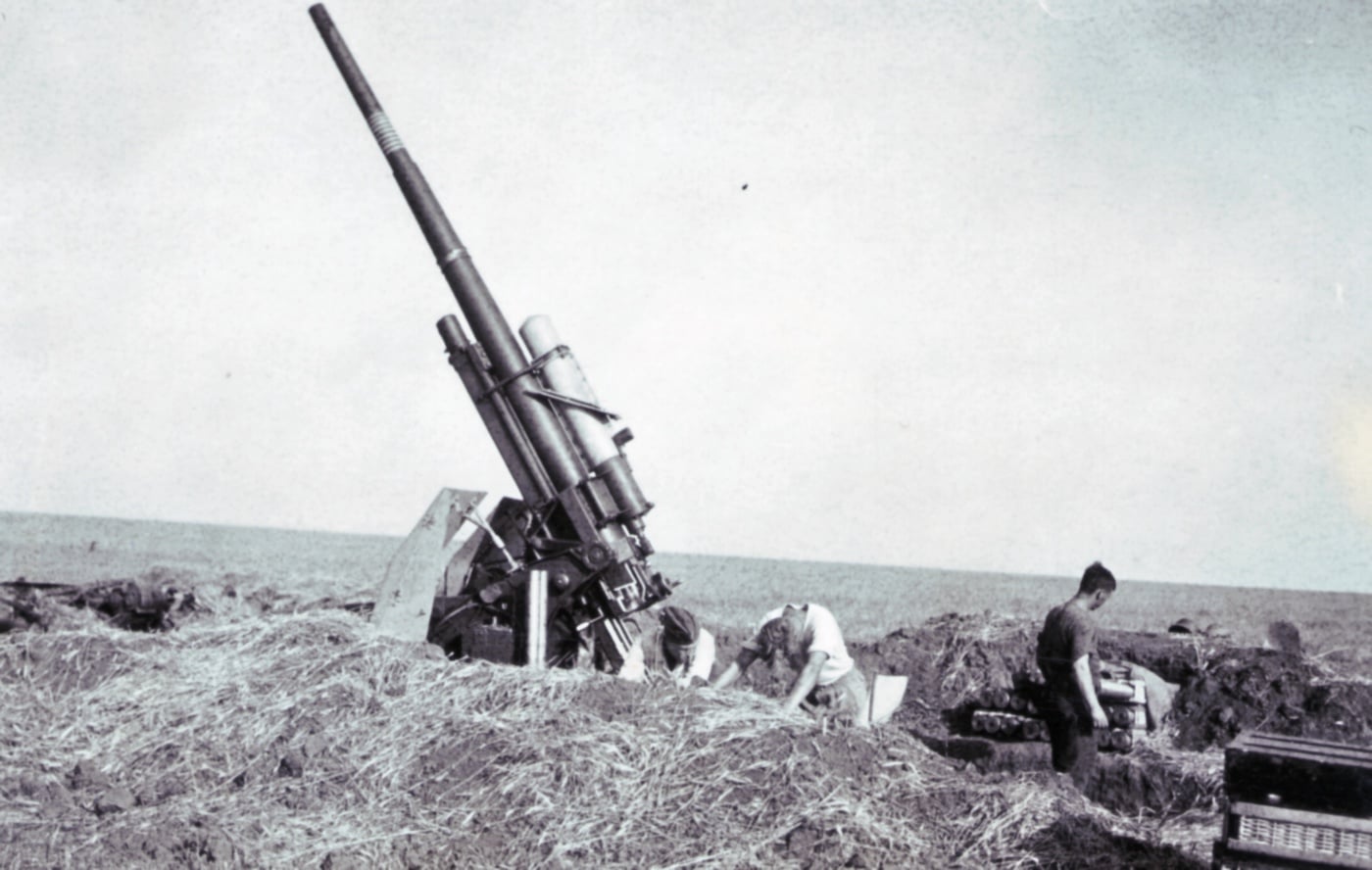
In position as a flak gun, the standard 88mm field emplacement also allowed the gun to function in the AT role. Note the ammunition storage bunkers dug into the earth walls. Image: NARA
All three variants combined to create the backbone of Germanys AA defense throughout WWII.
Its maximum ceiling was 49,215 feet the highest of all the German flak guns.
Even so, the effectiveness of the 88mm crews advanced throughout the war.
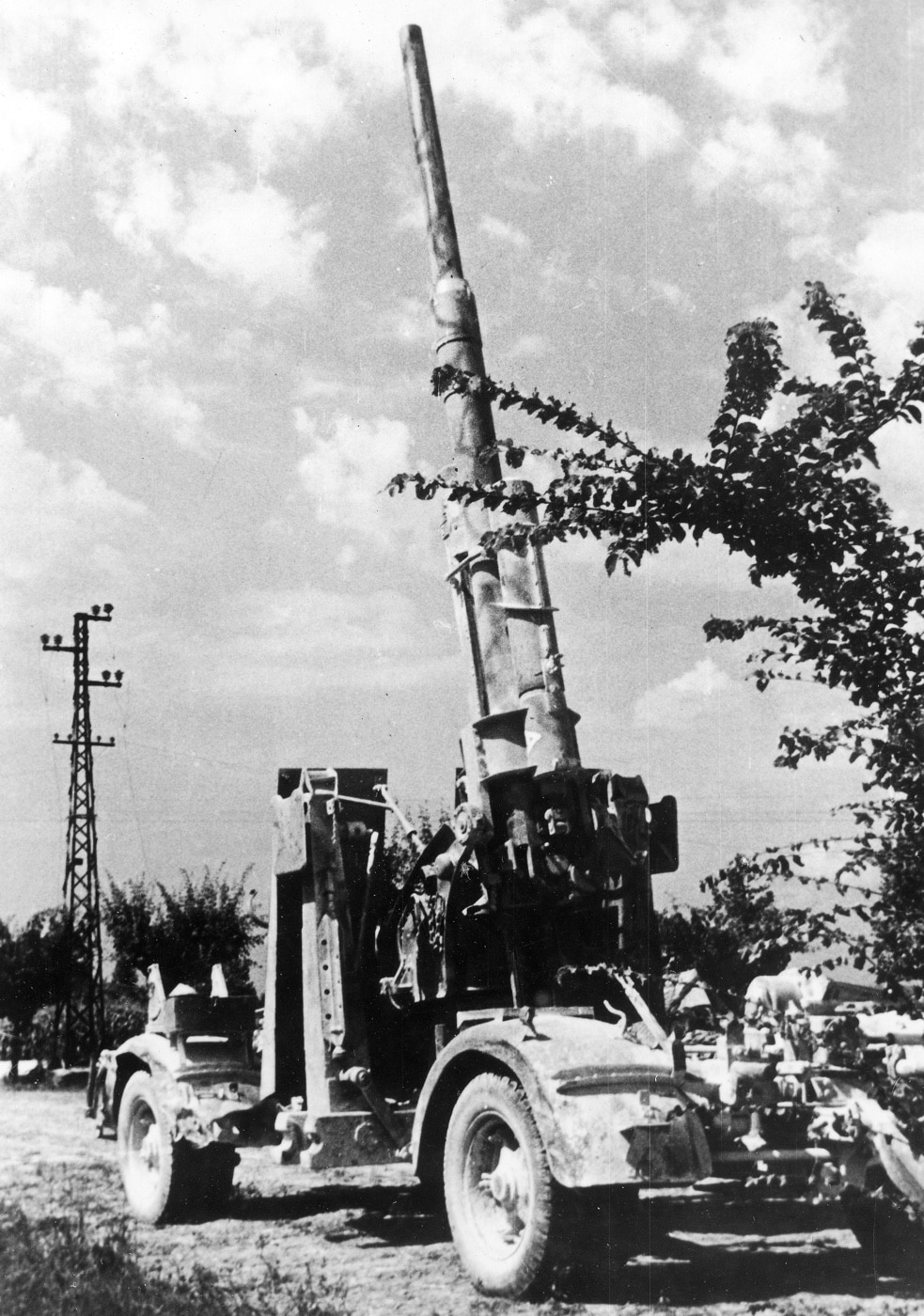
The Flak 41’s very low profile was used to create the Pak 43. Unfortunately, these weapons were particularly expensive (and slow) to manufacture. Image: Polish National Archives
More firing meant more hits.
More than 1000 heavy flak guns were used in the defense of the Ruhr.
By rapid deployment of our M7s, we put a few rounds with proximity fuses over each gun emplacement.
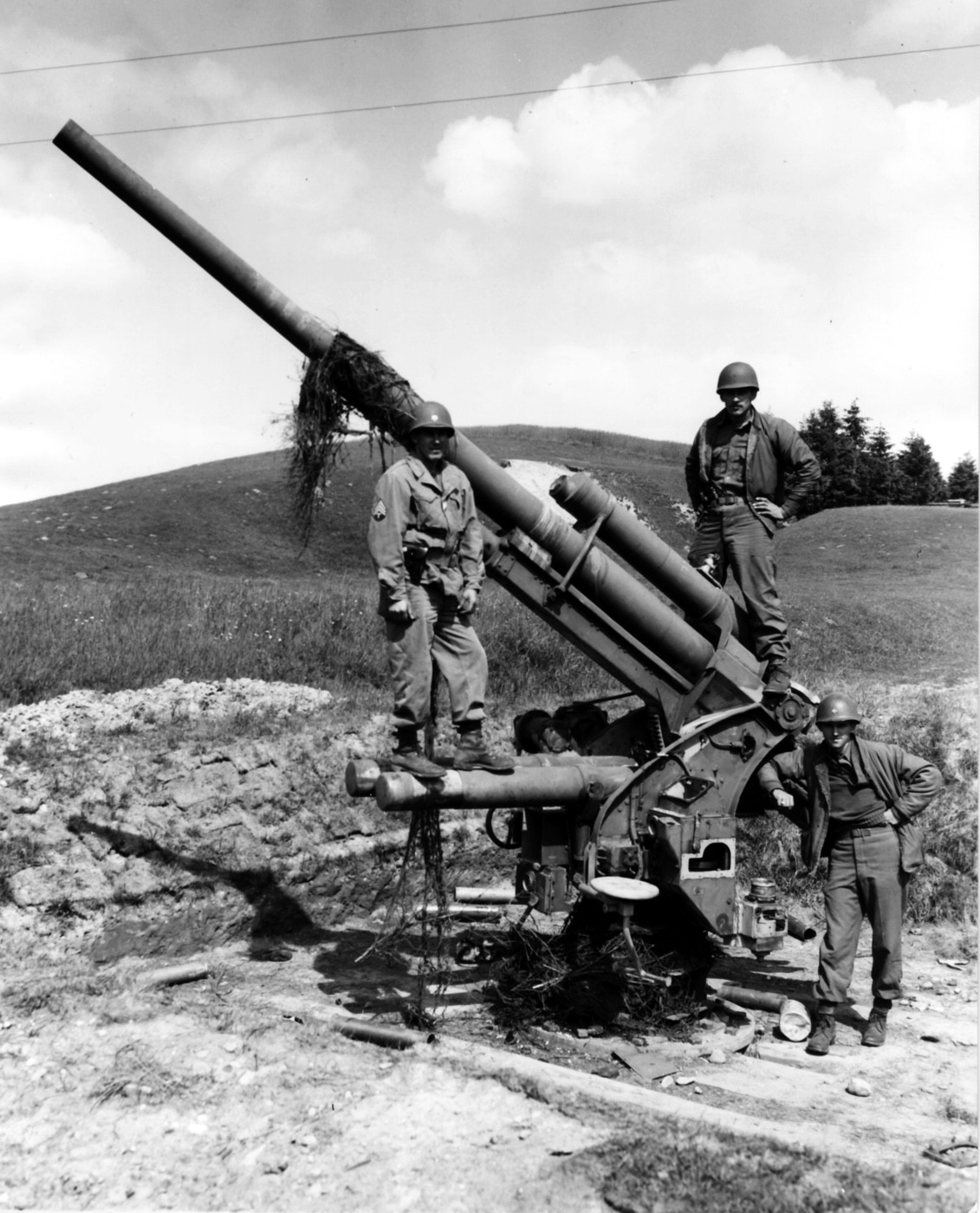
American G.I.s inspect a pedestal-mounted 88mm Flak at Augsburg, Germany during May 1945. Image: Author’s collection
The downward blast killed the crew and neutralized the gun.
With the 88mms neutralized, our tank columns enveloped the airport and proceeded into the city.
The 88mm was mounted on several armored vehicles, including the greatly feared Tiger tank.
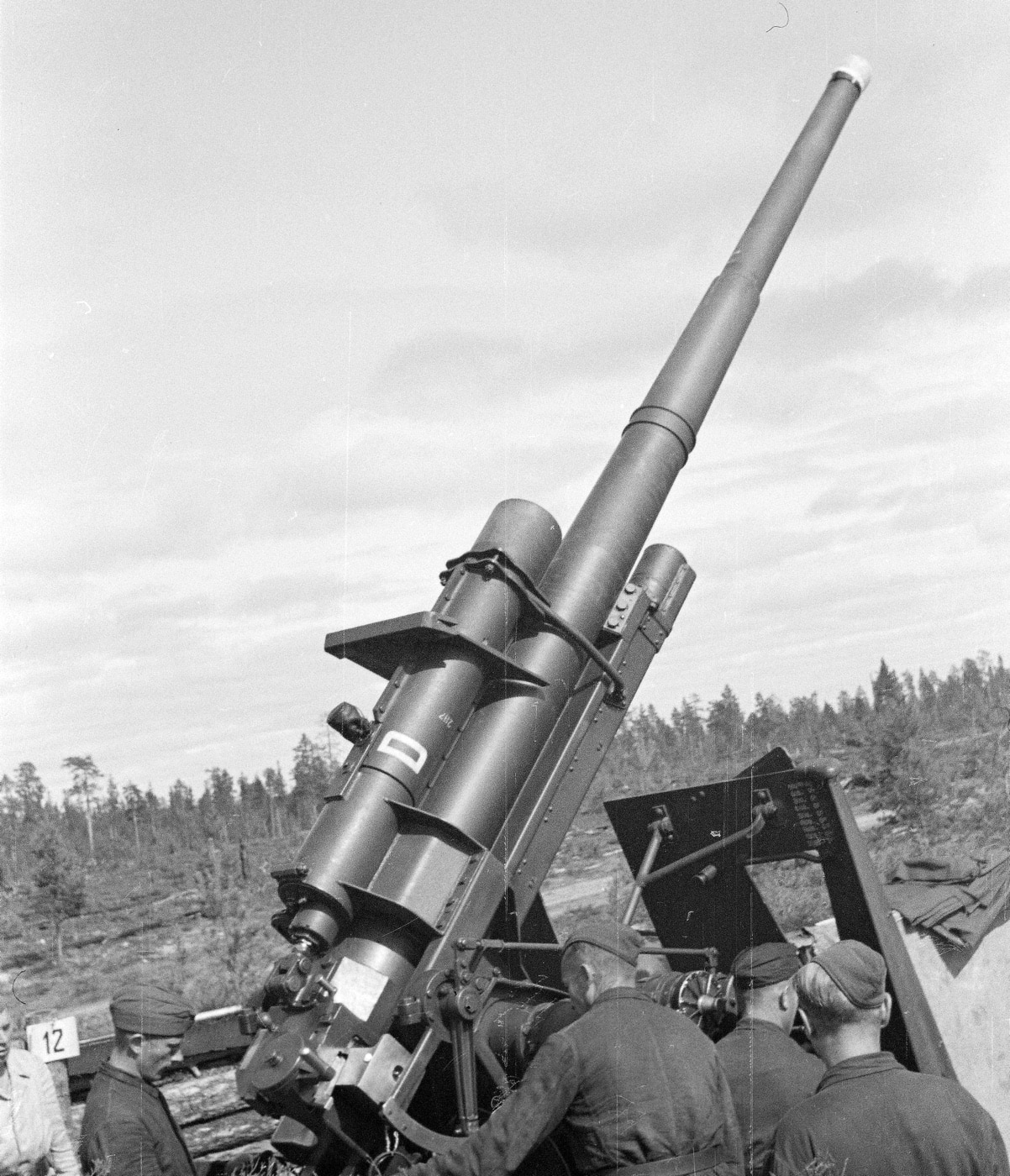
The 88mm Flak 18/Flak 36 guns were Germany’s most effective AA weapons of the war. One is shown here used by Finnish troops against the Soviet Union in the Continuation War. Image: SA-Kuva
Allied tankers spoke openly of their fears of the weapon and nicknamed it 88 fever.
There really arent any myths to bust about the German 88mm guns.
Destruction by a whistling 88mm AP round became a deadly fact of life.
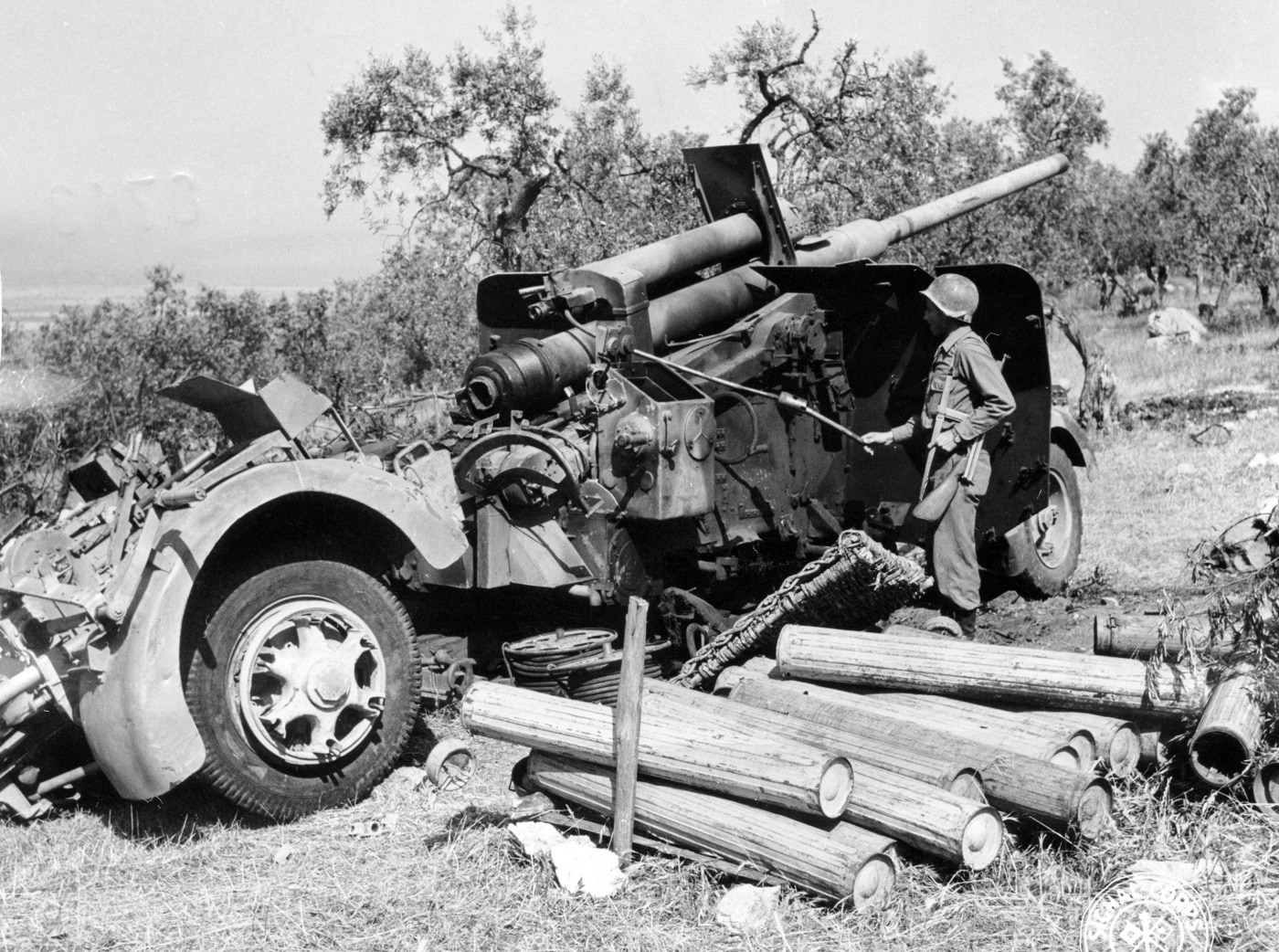
This Flak 41 represented the most advanced variant of the dual-purpose 88mm guns. This example was captured in Italy after its breech had been destroyed by its crew. Image: NARA
In the skies above, 88mm flak weapons fired effective AA rounds into Allied bomber streams.
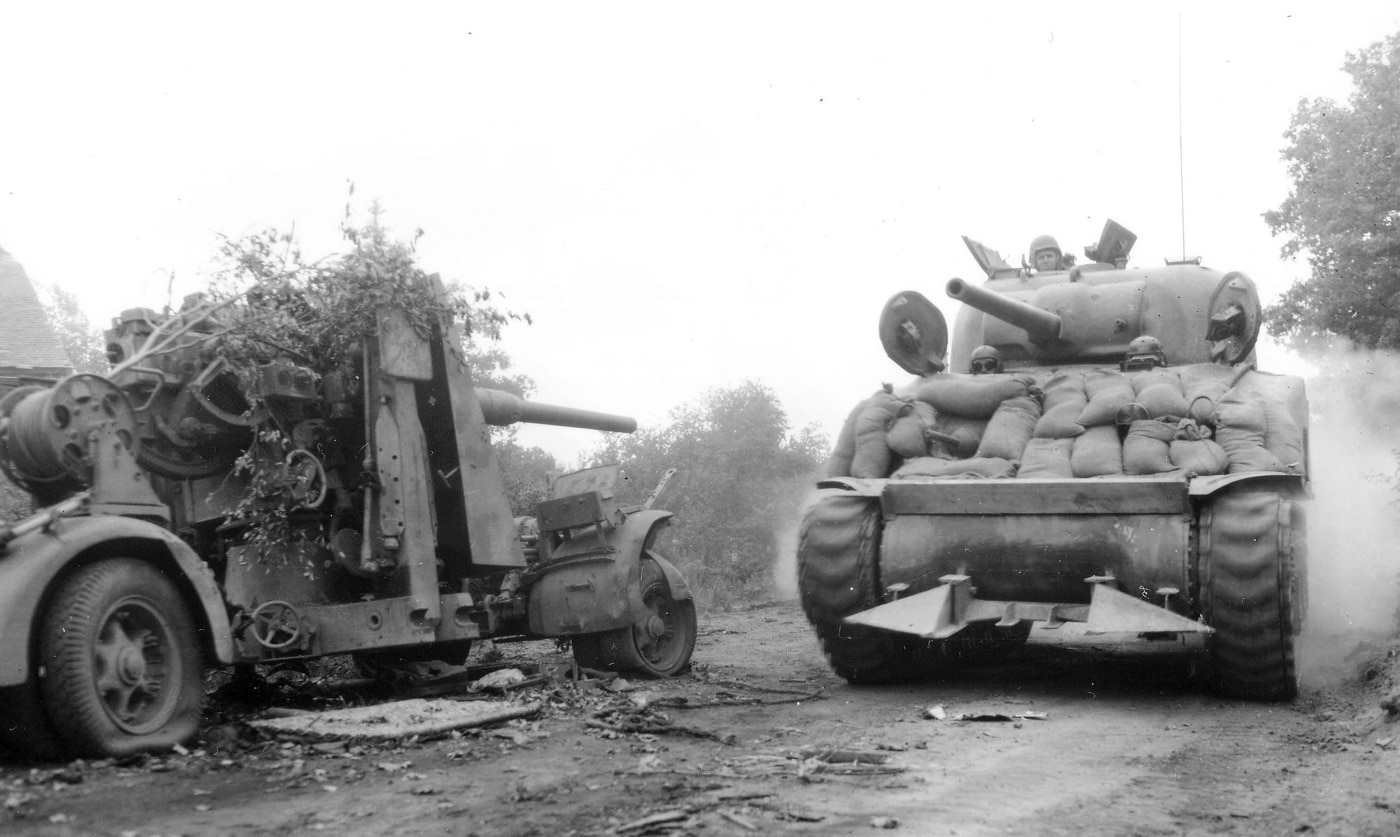
An American Sherman “Rhino” (hedge-cutter) tank passes an abandoned 88mm gun in Normandy. Image: NARA




